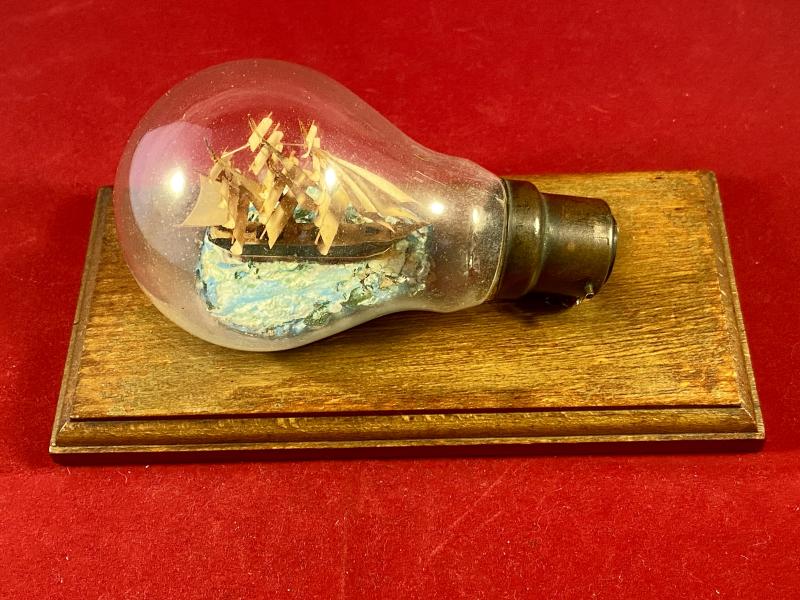Rare WW2 German Prisoner of War “Ship in a Bottle” – 19th Century Clipper Ship in a Glass Light Bulb
Here on offer is a rare example of WW2 German prisoner of war “ship in a bottle” type work.
This piece depicts a 19th century clipper ship that has been created inside an old clear glass light bulb.
A clipper was a type of mid-19th-century merchant sailing vessel, designed for speed. Clippers were generally narrow for their length, small by later 19th-century standards, could carry limited bulk freight, and had a large total sail area.
The bulb has been fixed (glued) to a small wooden plinth, possibly oak.
This type of miniature “ship in a bottle” work was often made by German Prisoners of War (POW’s), in internment camps during WW2, mainly in the UK.
My understanding is that German prisoners would make items from what ever they could get their hands on, to sell or trade with the prison guards for food and cigarettes.
The triple masted model of the clipper has been very well made and is set into a light-blue and white plaster base, that looks like the sea. There is no damage that I can see to the model, just a tiny gap at the underneath, where the glass fits into the top of metal “bayonet” light bulb connector.
The old metal connector now has a tarnished patina finish to the metal.
I can only find very limited references to this type of art. There is one bulb in the Imperial War Museum and the Antiques Roadshow featured a single ‘Bulb” on one of their shows and valued at between £300 and £350.
The wooden plinth is 6” (15.3cm) wide by 3” (7.7cm) deep.
The bulb measures about 4.25” (10.8cm) long and is about 2.4” (6cm) diameter.
It weighs 116g.
Please see my pictures for the details of the condition, which complement this description.
Please see my TERMS OF BUSINESS regarding Deliver Charges and Insurance regarding additional insurance cover, should you require it, BEFORE the item is dispatched.
The responsibility lies with the customer to check with your Customs restrictions that this item can be imported into your country.
Code: 51286










